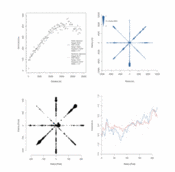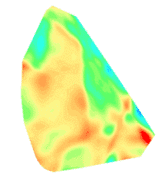iSoil - WP4 Pedometrics
 | As formulated in the Thematic Strategy for Soil Protection prepared by the European Commission soil degradation is a serious problem in Europe. The degradation is driven or exacerbated by human activity and has a direct impact on water and air quality, biodiversity, climate and human life-quality. High-resolution soil property maps are one major prerequisite fort he specific protection of soil functions and restoration of degraded soils as well as sustainable land use, water and environmental management. However, the currently available techniques for (digital) soil mapping still have deficiencies in terms of reliability and precision, the feasibility of investigation of large areas (e.g. catchments and landscapes) and the assessment of soil degradation threats at this scale. A further quandary is the insufficient degree of dissemination of knowledge between the scientific community, relevant authorities and prospective users and deficiencies in standardisation. | |
| ||
| The focus of the iSOIL project is on improving fast and reliable mapping of soil properties, soil function and soil degradation threats. This requires the improvement as well as integration of geophysical and spectroscopic measurement techniques in combination with advanced soil mapping approaches, pedometrical and pedophysical approaches. An important aspect of the project is the sustainable dissemination of the technologies and concepts developed.Work package four (WP4) covers all relevant research and application topics concerning the incorporation of geophysical data into DSM approaches for producing high resolution soil property maps. Pedometrical research includes the quantification of the relationship between geophysical data and target soil properties (e.g. particle size distribution, bulk density, organic carbon), the optimised collection of samples to calibrate the relationships and to assess their strength, and the use of covariate information to improve mapping. Beyond digital mapping of soil properties, data interpretation, validation and analysis of sensors and environmental data, as well as the development and application of machine learning algorithms to understand the data and their relation are very important tasks in this work package. | |
 | ||
| Overview | |
|---|---|
| Project | iSoil - Interactions between soil related sciences - Linking geophysics, soil science and digital soil mapping (main project page) |
| Subproject | WP4 Pedometrics |
| Start/End | 2008-2011 |
| Funding | EU (FP7) |
| Keywords | Digital Soil Mapping, Soil properties, Soil function and threats, Spatial data analysis |
| Contact | Karsten Schmidt, Thorsten Behrens (WP leader) |
| Press | Daumann, J.: Dem Boden auf dem Grund gehen, in: Studierendenmagazin Faktor14, Ausgabe 4, Mai 2011. |



